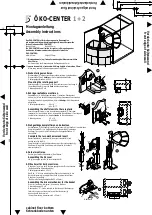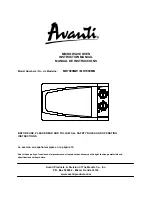
NOTE:
Where the appliance spigot or flue pipes
protrudes into the chimney, care should be taken to
ensure that it does not block the chimney.
DOWN DRAUGHTS
However
well
designed,
constructed
and
positioned, the satisfactory performance of the flue
can be adversely affected by down draught caused
by nearby hills, adjacent tall buildings or trees.
These can deflect wind to blow directly down the
flue or create a zone of high pressure over the
terminal.
A suitable anti-down draught terminal or cowl will
usually effectively combat direct down blow but no
cowl is likely to prevent down blow due to a high
pressure zone. Ensure that any cowl used will not
restrict the flue exit.
CHIMNEY CLEANING
Whichever type of flue is chosen, there must be
cleaning access to the whole of the flue system.
The flue of the chimney will need to be cleaned
regularly. How often will depend a lot on how your
Cooker is run, but, to start with, make a point of
inspecting the flue system every one or two weeks.
This period may well be extended as time goes by
if there is little sign of deposits. Some people find
they need to sweep the flue every six to eight
weeks.
HEARTH CONSTRUCTION
Hearth should be strong enough to support total
weight of cooker. When a properly constructed
hearth is not available we recommend that the
Cooker be placed on a slab of foamed concrete 7.5
cm (3”) or a slab of other insulating material. This
hearth must extend at least 40 cm (16”) to the front
and 30 cm (12”) to each side.
A flue pipe should only be used to connect an
appliance to a chimney and should not pass
through any roof space.
Flue pipes may be of any of the following materials:
(a)
Cast iron as described in BS 41:1973
(1981)
(b)
Mild steel with a wall thickness of at least
3mm.
(c)
Stainless steel with a wall thickness of at
least 1mm and as described in BS EN
10095:1999 specification for stainless and
heat resisting plate sheet and strip, for
grade 316, S11, 316 S13, 316 S16, 316
S31, 316 S33, or equivalent Euronorm
88-77 designation.
(d)
Vitreous enamelled steel complying with BS
6999: 1989.
STANLEY CAST IRON PIPES ARE HIGHLY
RECOMMENDED FOR INTERIOR USE.
7
Fig.10
Fig.9
A bend should not
make an angle of
more than 37.5
o
with the vertical.
Содержание Mourne
Страница 13: ...12 MOURNE EXPLODED VIEW ...









































